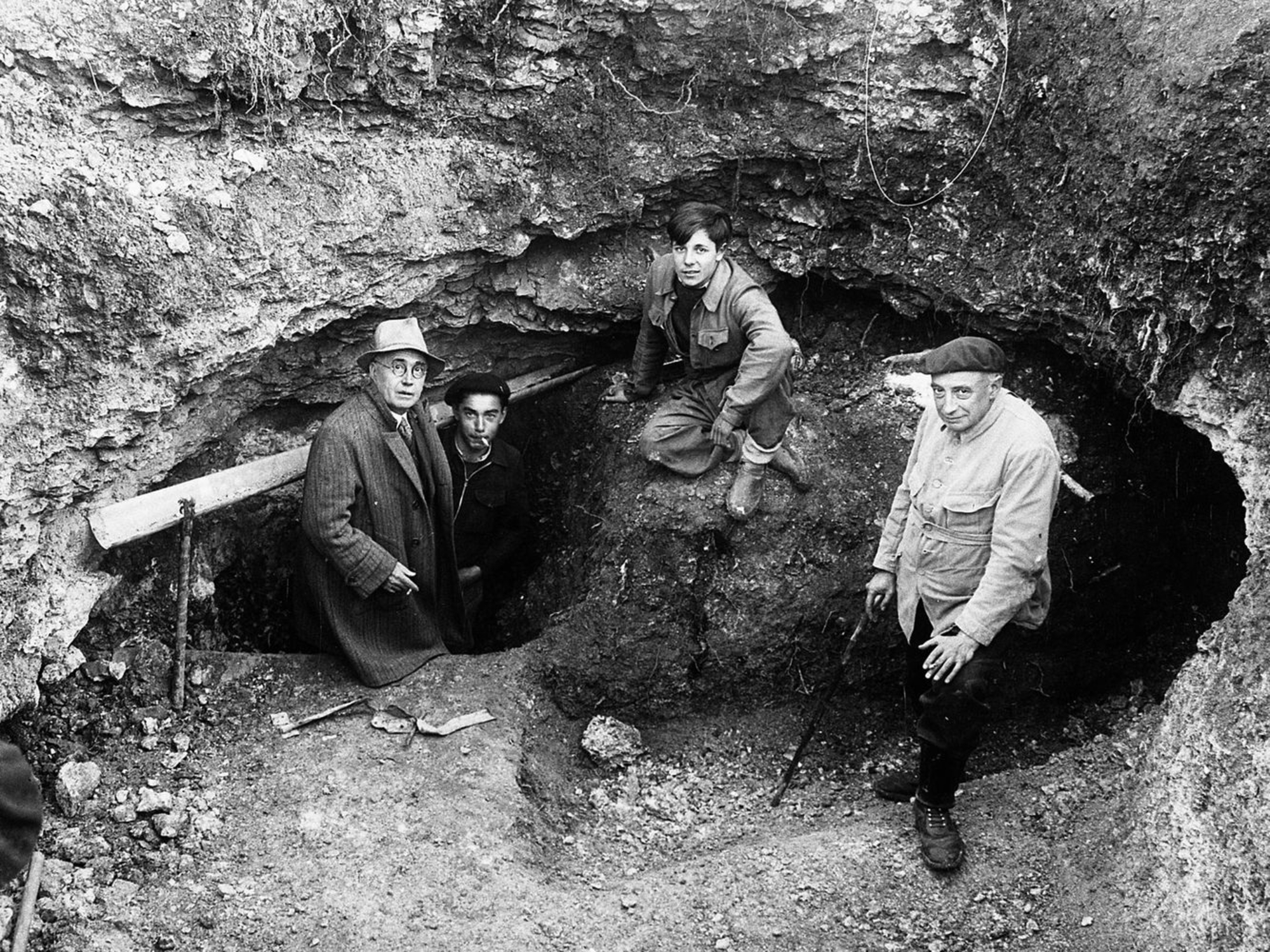
- Home
- History
- The work of André Glory. 1952-1963
Age, fatigue and failing eyesight meant that Breuil could not continue his research at Lascaux, and he found his successor in André Glory. Initially, he assigned him the work of recording the engravings. In 1952, Glory began working in the Passageway, where he identified 286 figures, most of which he recorded. He moved on to the Chamber of the Felines, which contained 87 figures. When he reached the Apse, he was confronted with a large-scale ensemble; the decipherment and recording of the Apse's approximately 600 figures required prolonged visits that took place at intervals between 1953 and 1962. The greater elevation of the graphic field in this part of the cave meant that scaffolding had to be erected, which took up almost the entire space.
At the same time, the Minister of State for Cultural Affairs assigned Glory the work of supervising the earthworks that were carried out prior to the installation of the cave's air regeneration system. The ever-increasing numbers of tourists were raising CO2 levels, making such a machine necessary. The entryway was dug out to a depth of five metres to house the massive equipment. Burial of the air extraction shafts meant that the cave floor had to be dug up from the Machine Room to the Upside-Down Horse, and from the Hall of the Bulls to the Mondmilch Gallery.
In these various underground spaces, Glory uncovered two archaeological levels and collected a fairly large amount of lithic and bone material. He continued these same investigations in the Chamber of the Felines.
In 1961–62 he undertook a meticulous excavations of the Shaft, discovering in particular the red sandstone lamp.
Associated media
Open Media Library
